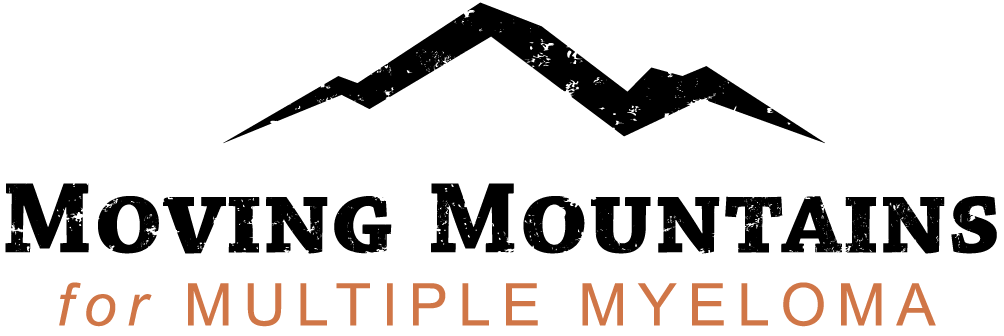
Mount Kilimanjaro, Tanzania2016
BLOGS

Stan Wagner
Almost Six Months
June 26, 2016
Monday, June 27
It's been about six months since we've climbed Mount Kilimanjaro to bring awareness and donations to find a cure to multiple myeloma.
The memories haven't really worn away. The team still stays in touch every now and then via texts and Facebook, and we all met up in Miami this past May. I've been in touch with Freddie, our lead guide. He's informed me that his girl's sewing school is doing well. I miss my Kili family. It's too bad we don't live closer to each other.
This adventure has really become much bigger than I thought it would ever be. I'm extremely happy and honored to be, along with Jamie Slater, one of the founding members of this endeavor. Plus, it's just as exciting to see that it's spawned into many other adventures for multiple myeloma patients, who we can encourage to get out there and live their lives to the fullest.
There is so much that keeps coming up regarding our expedition that it is impossible for this experience to fade into a faint memory. Since returning from our climb, I've been asked to attend a multiple myeloma support group meeting to share my thoughts on what this climb has meant to me.
I've been recognized by patients and staff at the hospital, where I'm treated as “the patient that climbed the mountain.”
I'm currently in the process of trying to get our documentary on the TV screens of the cancer center at Mount Sinai Hospital in New York City.
But none of this is important if what we've done won't ultimately help to find a cure. Thanks to the MMRF and CURE magazine, and thanks to Takeda and the other pharmaceutical companies for their ongoing search to create the drugs that will someday lead to a cure.
Something I Have to Say
Thursday, February 4
I’ve been asked more than once how this climb compared to my chemotherapy and treatment of multiple myeloma. Even after more than a week since we were on the mountain, my answer remains the same. For me, there is no comparison.
I cannot speak for the other patients on the expedition. My journey with multiple myeloma has been relatively smooth. It was caught by a simple blood test (something that everyone should get when they get a yearly exam). I’ve never had any bone involvement. I’ve responded extremely well to treatment. Never needing a stem cell transplant, I sailed through nine months of treatment, achieving complete remission (CR) four months after starting the usual course of drugs. That was in 2013. I’m still in CR! Proving that the drugs the MMRF has helped to make available actually work makes me LIVING PROOF!
So, back to the comparison. Climbing Mt. Kilimanjaro was brutally difficult. I cannot, in any way, compare it to my treatment. Other than the harsh reality and stress of being diagnosed, the mountain (and what it dealt physically and mentally) won out in terms of difficulty. But, I am glad I’ve done it. I’m even happier to have done it with my new family.
Thank you, MMRF.
Thank you, Takeda.
Thank you, Celgene.
Thank you Dr. Sundar Jagannath and the rest of the myeloma team at Mount Sinai.
And of course, thank you, Team Moving Mountains for Multiple Myeloma!
December 29, 2015
We started our trek towards the summit on Saturday night. At 10:00 p.m., we awoke after three hours of sleep, had a snack, and headed towards the summit of Kili around 10:45 p.m.
Before I go any further, I have to thank our lead guide, Freddie, assistant guide, Mark, and porter, Emanuel. I would not have reached the summit without Mark. Emanuel was my savior getting down.
Pushing our way towards the summit was the hardest thing I've ever done. It was freezing cold with winds over 40 mph. It was surreal. Here we were, a "train" of humanity walking up a rocky slope. It felt as though the wind would blow us off the mountain and Kili was saying "get off my back."
But we marched on — freezing fingers and all. It was brutal.
What the hell am I doing here in this darkness? The only positive was the clear sky.
At times, I saw my breath in the light of my headlamp come out in perfect rings of color. Hallucinating? I looked at my watch for the first time at 5:30 a.m. We were seven hours into this craziness and I could finally see the light. The sun was would rise in an hour and everything would change.
I'm not sure of exact times, but we got to Stella Point sometime after sunrise on Sunday morning. A quick rest and it was time to head towards Uhuru Peak. It was the slowest, toughest walk I've ever done: Walk 5-10 steps, rest, take a few breaths and repeat.
As I watched Mark Harder, a few yards ahead, wobble left and right, I figured I was probably doing the same. Jeff Levine came up behind me as we made our way to the peak — together. I don't know what it was that got me to that peak. My brain was telling me to go forward but my body wasn't exactly cooperating.
But I got there.
I think the promise I made to bring the names on my banner to the summit motivated me. It was an obligation that I had to meet.
It was a bit weird up there. People were jockeying for position in front of the sign for pictures. I wish we could have stayed at the summit a bit longer. I wasn't having any issues with the altitude. But after less than 20 minutes trying to soak this all up, it was time to get off the mountain.
There are two parts to mountain climbing: going up and coming down. The descent, too, was very difficult.
Reaching the summit was an amazing feat and I did it with an amazing team. I'm sure there were plenty of frozen tears up there. I'm sure more of this accomplishment will come back to me as I look at the photos. Right now, the whole thing seems surreal.
My life is pretty average. I’m print production artist in NYC. My career has had its ups and downs. I’d go to work and come home to my wife and dogs and spend weekends doing what most married coupIes do. I also have the added responsibility of helping to look after my elderly mother who lives 120 miles away.
I went to the National Institutes of Health (NIH) to take part in a study that was to track the progression of the disease in myeloma patients. Doctors informed me that my disease may be more aggressive and may advance to full multiple myeloma at a quicker pace. They offered to enroll me in the drug trial that they had at the time. I turned it down.
Instead, I took part in a clinical trial at Mount Sinai in NYC. It was for a bone-strengthening drug that was thought to help in slowing the progression of myeloma.
Six months into the trial, my doctor, Sundar Jagannath, informed me that the myeloma was advancing. Since I was still fairly strong and my bones and organs had not yet been attacked by the cancer, he felt it was a good time to start treatment. As scary as myeloma is, the thought of treatment scared me just as much.
But it was the right decision. After five cycles of chemotherapy, I was in complete remission. I continued treatment and harvested my stem cells. Now, almost three years later, I’m still in remission without a stem cell transplant thanks to the drugs the MMRF has pushed to get approved.
My life isn’t like it used to be. My “new normal” includes monthly blood work, maintenance therapy and quarterly infusions of Zometa (zoledronic acid) to help strengthen my bones.
Throughout treatment, I continued with life as if nothing had changed. I missed a handful of work days. My wonderful wife, Pam, has helped me get through this. She held my hand during a bone marrow biopsy. She sat with me in waiting rooms. She spoke with the insurance company and the hospital billing department so I wouldn’t have to get stressed about the financial aspect of treatment for cancer. When I would worry, she’d say, “Don’t worry unless it’s time to worry.”
Cancer has pushed me to do things I’d never thought of doing, including being a moderator of a Facebook MM support page and helping to start a Brooklyn MM support group. Now, I’m ready to face a new challenge: Climbing Mount Kilimanjaro. This was not on my bucket list. My friend and co-worker, Jamie Slater, had always wanted to climb Kilimanjaro but wanted to do it for a noble cause. She brought her idea to me. Not knowing entirely what would be involved, I said yes and contacted the MMRF.
Since then it’s mushroomed into the huge project it is now: 15 climbers and a goal of raising $150,000 for MMRF to find a cure.
I am looking forward to spending time with 14 great people on this mountain and I cannot wait until that morning when we are at the summit as the sun rises.
Of course, this will be a physical challenge. If there’s anything I’m not looking forward to, it might be waking up at 1 a.m. to start our journey to the summit. I’m sure that even that part of the trek will be fun though.
- Stan


